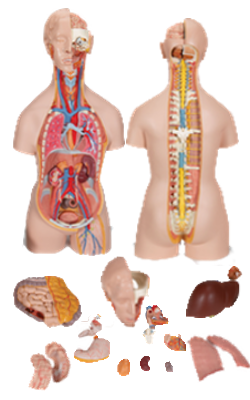Main Model

LEFT INTERNAL JUGULAR VEIN

Veins in Anterior Cervical Region
Most veins in the anterior cervical region are tributaries of the internal jugular vein (IJV), typically the largest vein in the neck. The IJV drains blood from the brain, anterior face, cervical viscera, and deep muscles of the neck. It commences at the jugular foramen in the posterior cranial fossa as the direct continuation of the sigmoid sinus.
From a dilation at its origin, the superior bulb of the IJV, the vein descends in the carotid sheath, accompanying the internal carotid artery superior to the carotid bifurcation and the common carotid artery and vagus nerve inferiorly. The vein lies laterally within the carotid sheath, with the nerve located posteriorly.
The cervical sympathetic trunk lies posterior to the carotid sheath. Although closely related, the trunk is not within the sheath; instead, it is embedded in the prevertebral layer of deep cervical fascia. The IJV leaves the anterior cervical region by passing deep to the SCM. The inferior end of the vein passes deep to the gap between the sternal and clavicular heads of this muscle. Posterior to the sternal end of the clavicle, the IJV merges with the subclavian vein to form the brachiocephalic vein. The inferior end of the IJV dilates to form the inferior bulb of the IJV. This bulb has a bicuspid valve that permits blood to flow toward the heart while preventing backflow into the vein, as might occur if inverted (e.g., standing on one's head or when intrathoracic pressure is increased).
The tributaries of the IJV are the inferior petrosal sinus and the facial and lingual (often by a common trunk), pharyngeal, and superior and middle thyroid veins. The occipital vein usually drains into the suboccipital venous plexus, drained by the deep cervical vein and the vertebral vein, but it may drain into the IJV.
The inferior petrosal sinus leaves the cranium through the jugular foramen and enters the superior bulb of the IJV. The facial vein empties into the IJV opposite or just inferior to the level of the hyoid. The facial vein may receive the superior thyroid, lingual, or sublingual veins. The lingual veins form a single vein from the tongue, which empties into the IJV at the level of origin of the lingual artery. The pharyngeal veins arise from the venous plexus on the pharyngeal wall and empty into the IJV approximately at the level of the angle of the mandible. The superior and middle thyroid veins leave the thyroid gland and drain into the IJV.